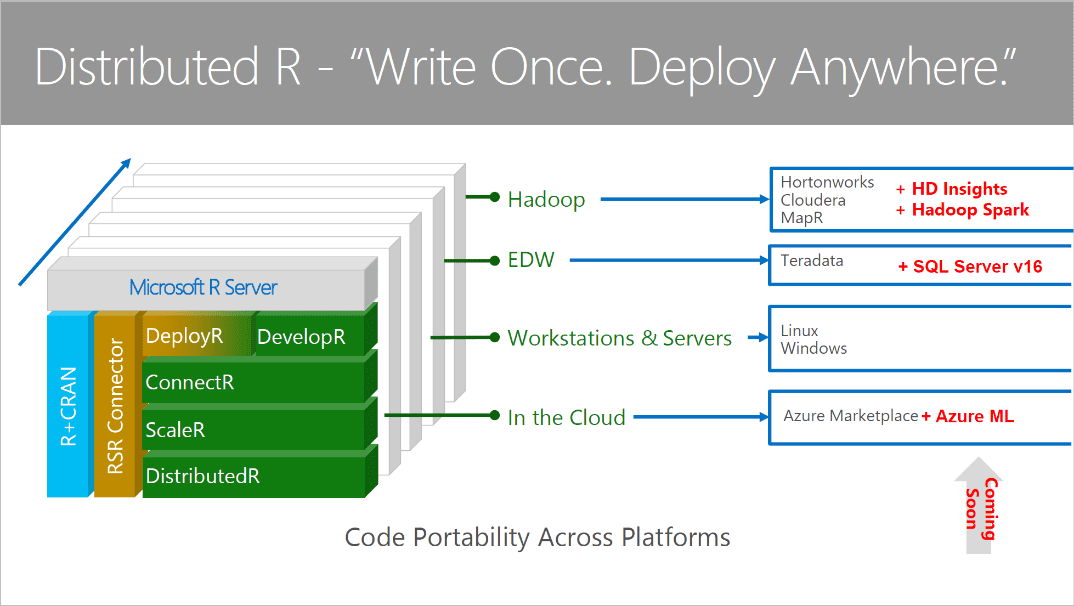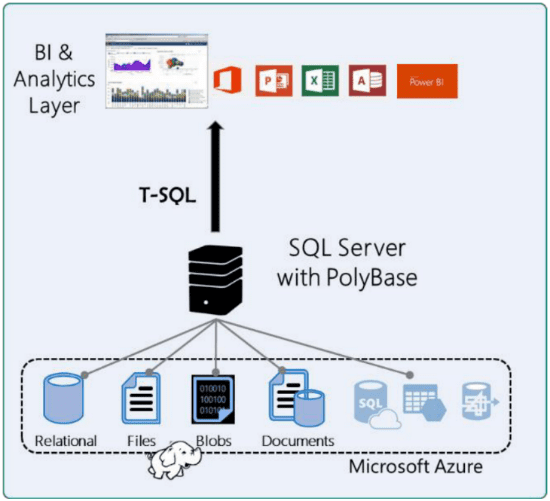Exciting news! Microsoft continues to show its leadership in advanced analytics with the upcoming release of SQL 2016 featuring R integration. This functionality, known as R Services in SQL Server, makes it easier than ever to operationalize high-performance Big Data analytics with traditional, unstructured, or hybrid data sources – providing a key link between data science and the database.
R is an open-source platform for statistical modeling, and has grown rapidly in popularity everywhere – from academia to enterprise – as a powerful tool for predictive analytics. However, with its design as a single-threaded, in-memory application, R has traditionally had difficulty scaling to Big Data applications. Models developed and tested in R often have to be ported to a more production-ready platform like .NET to handle the workload and data environment, seriously delaying time to value. But Microsoft’s recent acquisition of Revolution Analytics, the leading provider of commercial software and services built on top of R, has led to exciting developments in what’s possible with in-database analytics.
With R Services in SQL Server 2016, Microsoft enhances (and maintains complete compatibility with) open-source R by offering multi-threaded and parallel computing capabilities, as well as in-memory and disk-based data management. Including it in the same service as SQL Server means processing analytics in-place, eliminating or reducing data movement and management latencies. The combination of offering enhanced R processing capabilities and bringing the models closer to the data really enable high-value Big Data applications like predictive maintenance (Internet of Things), IT log analytics, customer sentiment and behavior analysis via social media, targeted marketing/customer segmentation, improving healthcare outcomes, and more.
Further, other exciting new features of SQL 2016 like PolyBase data querying technology allow you to easily tackle hybrid data scenarios. For example, bring together unstructured data in SQL Server from Hadoop with other on-premises or cloud-structured sources and perform analytics on that data.
R in SQL Server not only brings powerful capabilities to the database, but offers another important option in Microsoft’s ‘write once – deploy anywhere’ approach for analytics agility across platforms. As seen in the Code Portability Across Platforms image above, Microsoft R Server (aka R Services in SQL 2016) can be deployed in Hadoop, the warehouse, locally in workstations, or in the cloud. I would also add that there are a nice variety of ways to consume the results, such as Power BI, Excel, or web service. All of these options signal a strong commitment from Microsoft not only to data science, but the R platform. If you haven’t already done so, now is a great time to learn more about moving from traditional BI to a true system of insight with advanced analytics, and R can be a key component!
Learn more about R Services in SQL Server 2016: https://www.microsoft.com/en-ca/server-cloud/products/r-server/
If you have additional questions about predictive analytics using R in SQL Server 2016 please contact us we’ll respond as soon as possible.






